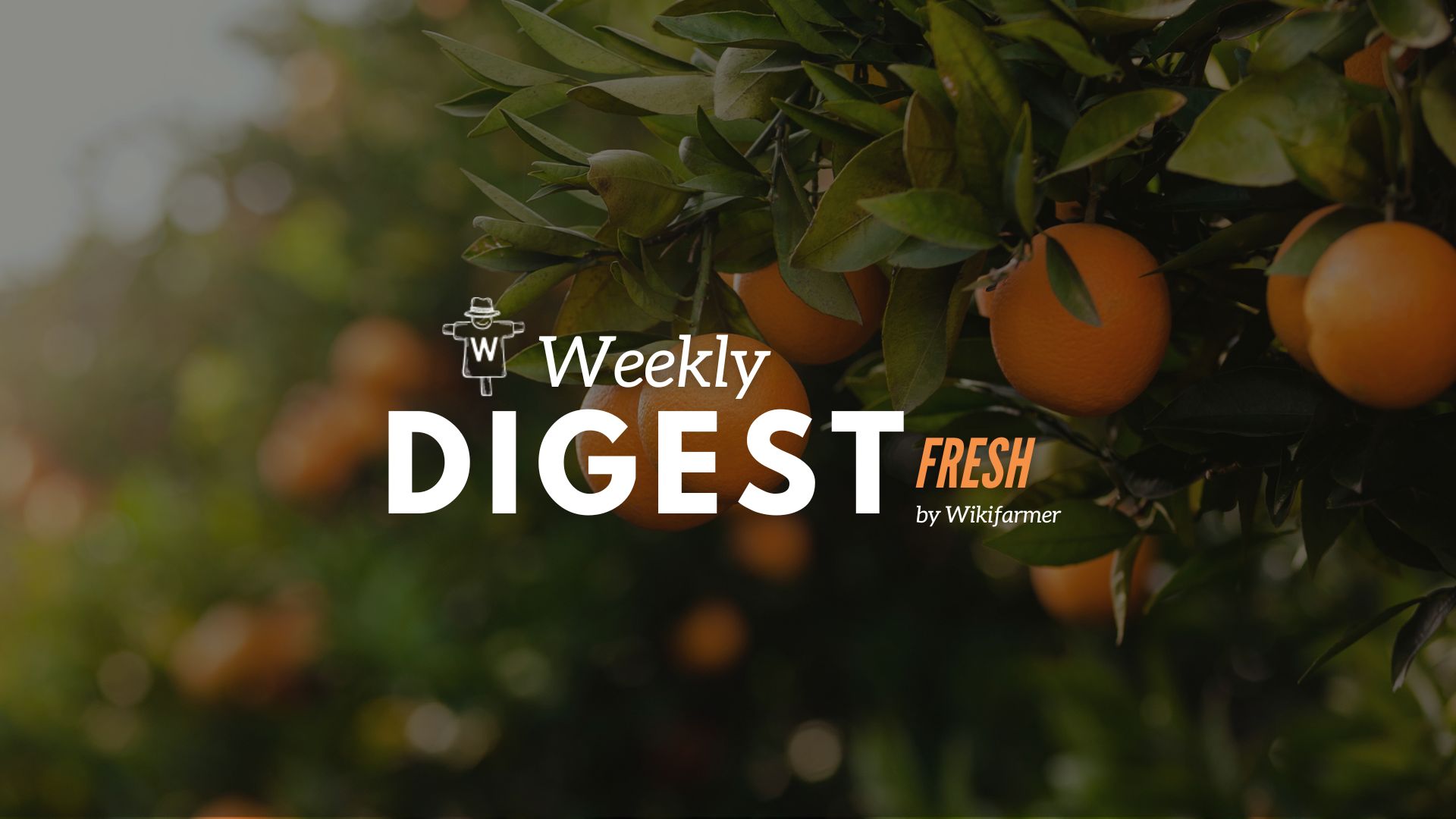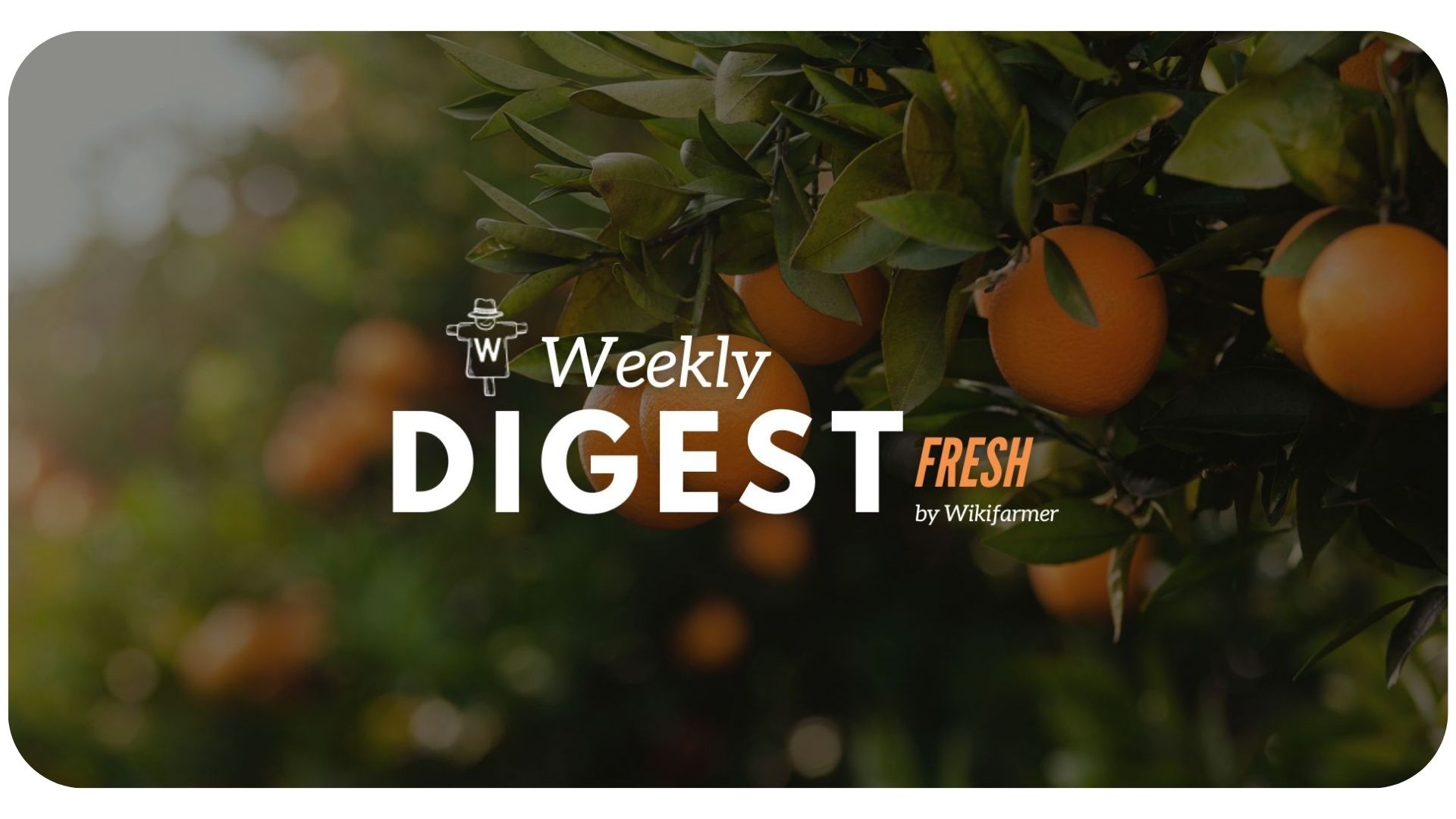Orange Market Digest w49

Weekly Orange Market Updates
Shifting the focus of the Weekly Fresh Digest Series
As we move into different seasons, our Weekly Fresh Digest will shift its focus to the king of citrus fruits - the orange. Oranges are a staple in the Mediterranean diet and are of national strategic significance in international trade for countries like Greece and Spain, crucially affecting the prosperity of multiple communities that base their livelihood on its cultivation.
As the orange market is volatile due to the ever-changing consumer preferences and the geopolitical and climate factors that affect the operation of the agri-food markets, our goal is to share updates and insights to assist B2B buyers in making optimal decisions on the positioning of their product and their strategic planning.
The citrus category dominates in fresh produce exports
Citrus fruit is made for the top category of exported Greek fresh fruits for the first four months of the current year. According to a report from the Athens Chamber of Commerce and Industry, Tangerines have recorded the highest YoY volume growth in exports at 52.9%, followed by lemons at 48.4%. Oranges came in third with a 44.3% annual growth, with 219,677 tons exported during the period under study, compared to 152,257 tons in the same period last year.
Production Volumes Forecasts
According to data from Statista Market Insights, worldwide orange production volumes dropped by about -5.53% in the last season. For this year, however, it is estimated to rebound by about 12.4%.

For Greece, however, the movement is expected to be the opposite; after last year’s good season, our experts and representatives out of our wide supplier network state that this year is estimated to be characterized by lower volumes, smaller orange sizes, and lower quality. The main reason behind this unfortunate development is meteorological and has to do with the prolonged heat waves that scorched orange groves during the fall.
Furthermore, as we are approaching the middle of the harvesting season for naval oranges, it is clear that not only did their harvest begin later than expected, giving them a good start price-wise, but it is also going to end early, foretelling an imminent shortage coming earlier in the year than usual. This is bad news for farmers as consumer interest will be low for this type of produce. This has been observed with this year's kiwifruit, which had similar characteristics.
The Volume and Price Pressures from the Americas
Three out of the six most significant orange-producing countries, Brazil, the U.S., and Mexico, are facing a significant drop in production this year. This has led the prices of future contacts on processed commodities like orange juice to skyrocket as the markets discount their imminent shortage.
If we assume that the demand for these processed products will not falter significantly, we can predict that the previous development will create some positive pressure on prices throughout the orange supply chain, pushing orange wholesale prices upwards worldwide. This estimate will affect the main producing countries in the EU, namely Spain, Italy, and Greece.
-2.jpg?upscale=true&width=1120&upscale=true&name=logos-top_graphics%20(9)-2.jpg)
Price Updates
The European Commission’s Directorate-General for Agriculture and Rural Development shares weekly data on the wholesale prices for oranges in its member states. The data for the 2 latest weeks it has information on are as follows:
-2.png?upscale=true&width=1120&upscale=true&name=Mean%20Market%20Prices%2c%20Navel%20Oranges%20(1)-2.png)
Once again, Greek naval oranges pose a cost-efficient alternative to its main European competitors. However, the contrasting demand trends coming from different regions of the worldwide market, as well as production shortfalls due to weather phenomena and geopolitical events, pose great challenges to farmers as well as B2B buyers. All these players want to ensure a steady supply of quality products down the distribution chains. However, that is almost impossible if we do not consider the need for higher transparency in the practices of the agri-food business and the operation of its supply chains.
.png?width=450&height=87&name=New%20Logo%20(1).png)
